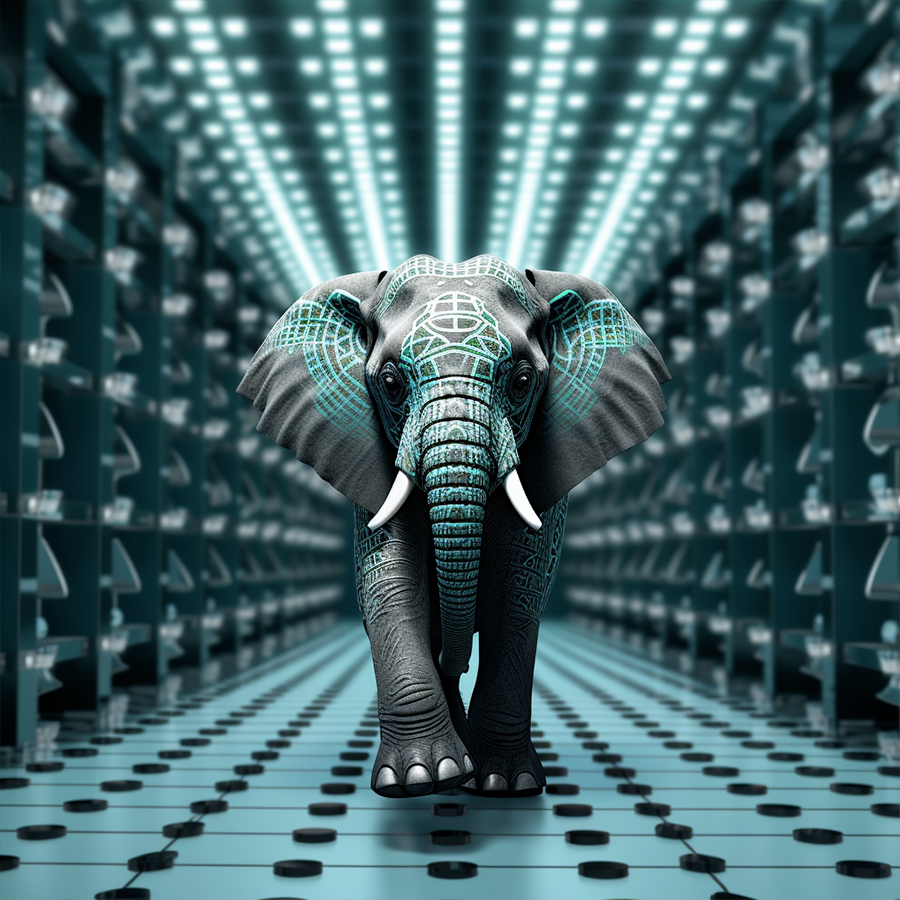As an online marketer, my goal is to drive conversions and sales for my clients’ businesses. In order to achieve this, I am constantly looking for new and innovative strategies to engage and influence customers. Yet, in addition to being an online marketer, I’m also a Yale-educated Economist. And one approach that has been gaining significant attention and success in the business world is leveraging behavioral economics. So is behavioral economics useful for online marketing? In this article, I will delve into the world of behavioral economics and explain how it can be a game-changer for online business success.
Table of contents
- Key Takeaways
- What is Behavioral Economics?
- How is Behavioral Economics Useful for Online Business Success?
- Examples of Behavioral Economics in Action
- How to Leverage Behavioral Economics for Online Business Success
- Frequently Asked Questions
- What is behavioral economics and how does it impact online business success?
- What are some fundamental applications of behavioral economics in marketing strategy?
- How can loss aversion be used to create compelling promotions?
- What is the decoy effect and how can it be used to make products or services more valuable?
- How does the endowment effect influence consumer decisions?
- How can understanding behavioral economics benefit businesses of all sizes and industries?
Key Takeaways
- Is behavioral economics useful? Understanding behavioral economics can be a game-changer for online businesses by tapping into psychological insights to influence consumer decision-making.
- By leveraging concepts such as choice architecture and nudging, online businesses can design their websites and marketing strategies to guide consumers towards desired actions.
- Applying behavioral economics can also benefit businesses in improving customer retention, loyalty, and pricing strategies.
What is Behavioral Economics?
Behavioral economics is a branch of economics that combines insights from psychology and economics to understand and influence human decision-making. Traditional economists base their theories on the assumption that individuals are rational decision-makers, known as homo economicus. But behavioral economists argue that human behavior is complex and often influenced by cognitive biases, emotions, and social norms.
Who are the Key Figures in Behavioral Economics?
Two key figures in behavioral economics are Nobel Prize-winning economist, Richard Thaler, and psychologist, Daniel Kahneman. Thaler’s research on behavioral economics challenged the traditional economic theory of rational choice and led to the development of behavioral economics as a field. Kahneman’s work in cognitive psychology provided insights into human decision-making and influenced the development of prospect theory, which examines how individuals make decisions under risk.
What are the Main Concepts and Theories in Behavioral Economics?
One of the key concepts in behavioral economics is choice architecture, which refers to the design of the decision-making environment. This includes the presentation and framing of options, as well as the order in which options are presented. Another important theory is the status quo bias, which refers to the tendency for individuals to stick with the default option or the current situation. Other concepts and theories in behavioral economics include loss aversion, hyperbolic discounting, and confirmation bias.
How is Behavioral Economics Useful for Online Business Success?
Behavioral economics provides valuable insights into human behavior that can be applied to online marketing strategies. By understanding how individuals make decisions, online businesses can design their websites and marketing strategies to nudge consumers towards desired actions, such as making a purchase or signing up for a newsletter. Additionally, behavioral economics can help businesses understand and influence customer retention and loyalty, as well as inform pricing strategies.
What are the Insights from Psychology that can be Applied to Online Marketing?
Behavioral economics draws on insights from psychology, such as the concept of loss aversion, to understand how individuals react to different marketing strategies. For example, offering a free trial can tap into individuals’ fear of missing out on a good deal and nudge them towards making a purchase. Similarly, using social proof or scarcity tactics can leverage individuals’ desire to conform and fear of missing out to drive conversions.
How can Behavioral Economics Help in Understanding and Influencing Human Decision-Making?
Behavioral economics can help businesses understand and influence human decision-making in various ways. For example, by understanding the status quo bias, businesses can design their websites to make the desired action the default option. This approach has been successfully used by companies like Amazon, where one-click ordering is the default option. Additionally, behavioral economics can help businesses design their pricing strategies to appeal to individuals’ desire for a good deal or fear of missing out.
Examples of Behavioral Economics in Action
There are several examples of how businesses have successfully applied behavioral economics principles to their online marketing strategies. One example is the use of choice architecture by grocery stores to encourage healthier food choices. By placing healthier options at eye-level and near the checkout, individuals are more likely to choose these options over junk food. Another example is the use of social proof by websites to showcase customer reviews and testimonials, which can influence individuals’ purchasing decisions.
How to Leverage Behavioral Economics for Online Business Success
There are several ways that businesses can leverage behavioral economics to improve their online business success. Firstly, it is important to understand the target audience’s behavioral biases and design strategies that appeal to these biases. Additionally, businesses can use choice architecture and nudging techniques to influence consumer behavior.
What is Behavioral Economics?
Behavioral economics is a discipline that merges the principles of psychology and economics to gain insight into how individuals make choices. It delves into the impact of cognitive biases, social norms, and emotions on consumer behavior. By examining these elements, businesses can gain a better understanding of and predict consumer decisions, enabling them to develop effective marketing tactics and enhance decision-making processes.
Behavioral economics also identifies the disparities between rational economic conduct and actual human behavior, providing valuable knowledge about consumer preferences, biases, and decision-making habits. This information can be utilized to craft more persuasive marketing messages, optimize pricing strategies, and enhance the overall customer experience.
Who are the Key Figures in Behavioral Economics?
Some of the key figures in behavioral economics include Daniel Kahneman, Richard Thaler, and Amos Tversky. Their groundbreaking research has transformed the field by challenging the assumption of rationality in decision-making. Kahneman, a Nobel laureate, is known for pioneering the study of cognitive biases and heuristics. Thaler, who introduced the concept of nudging, was awarded the Nobel Prize in Economics for his work. Tversky, who collaborated with Kahneman, is known for his research on the framing effect and prospect theory. These influential individuals have greatly contributed to our understanding of human behavior and decision-making, laying the foundation for the application of behavioral economics in various fields.
Let’s dive deep into the theories and concepts of behavioral economics, where human behavior and online business success collide.
What are the Main Concepts and Theories in Behavioral Economics?
Behavioral economics encompasses several key concepts and theories that explain how individuals make decisions. These include:
- Loss aversion: People tend to have a stronger preference for avoiding losses rather than acquiring gains.
- Anchoring: Initial information can significantly influence decision-making, even if it is irrelevant or arbitrary.
- Framing: The manner in which options are presented can greatly impact choices.
- Prospect theory: Individuals evaluate potential outcomes based on perceived gains and losses rather than objective probabilities.
- Nudge theory: Small changes in the choice architecture can effectively guide individuals towards desired behaviors.
- Social norms: People’s behavior is often influenced by their perception of what is socially acceptable.
Understanding these concepts can be beneficial for businesses in designing effective strategies to influence consumer behavior and enhance online business success.
How is Behavioral Economics Useful for Online Business Success?
Understanding and utilizing behavioral economics can greatly impact the success of online businesses. Here are some steps to effectively leverage this concept:
- Analyze customer data to identify behavior patterns and preferences.
- Implement targeted marketing strategies to create personalized experiences for customers.
- Influence purchasing decisions by utilizing social proof and testimonials.
- Create a sense of urgency through scarcity tactics such as limited-time offers or stock availability.
- Streamline the decision-making process by providing clear options and minimizing choices.
Pro-tip: By incorporating principles of behavioral economics, businesses can optimize their online platforms, increase customer engagement, and drive sales growth.
What are the Insights from Psychology that can be Applied to Online Marketing?
Insights from psychology can greatly inform online marketing strategies. By understanding human behavior, marketers can tailor their approaches to increase engagement and drive conversions. Some key insights include:
- Social Proof: Utilize testimonials, reviews, and social media influencers to create a sense of trust and credibility.
- Scarcity: Invoke a fear of missing out by highlighting limited quantities or time-limited offers.
- Loss Aversion: Emphasize potential losses rather than gains to prompt action.
- Personalization: Utilize data to deliver personalized recommendations and offers, enhancing the user experience.
By leveraging these psychological insights, online marketers can optimize their strategies and maximize the effectiveness of their campaigns.
Because let’s face it, humans are anything but rational creatures.
How can Behavioral Economics Be Useful for Understanding and Influencing Human Decision-Making?
Behavioral economics provides valuable insights into understanding and influencing human decision-making, allowing businesses to optimize their strategies. Here are some steps that demonstrate how behavioral economics can be utilized:
- Identify cognitive biases: Recognize the common biases that impact decision-making, such as loss aversion or the anchoring effect.
- Apply choice architecture: Design the decision-making environment by structuring options and presenting information in a way that encourages desired choices.
- Utilize social norms: Leverage the power of social influence by highlighting what others are doing or recommending.
- Create default options: Set default choices that align with the desired outcome, as people often stick with default settings.
- Use incentives strategically: Design incentives that align with individuals’ motivations and preferences to influence decision-making.
- Understand emotions: Recognize the role of emotions in decision-making and tailor strategies to appeal to consumers’ emotional states.
- Personalize messaging: Customize communication to resonate with individuals’ unique preferences and characteristics.
By implementing these steps, businesses can effectively tap into the behavioral factors that drive decision-making and improve their success in the online marketplace.
Examples of Behavioral Economics in Action
In the world of online business, understanding consumer behavior is crucial for success. This is where behavioral economics is most useful, blending psychology and economics to analyze how individuals make decisions. In this section, we will explore real-life examples of how behavioral economics has been utilized to influence consumer behavior and drive business success. From designing decision-making environments to making small changes that nudge customers towards rational choices, we will delve into the different ways behavioral economics has been applied in the online business world.
1. Choice Architecture: Designing the Decision-Making Environment
Designing the decision-making environment, also known as choice architecture, is a crucial aspect of behavioral economics. It involves shaping the way choices are presented to individuals in order to influence their decision-making processes. To effectively design the decision-making environment, consider the following steps:
- Understand the context: Analyze the specific situation and identify the choices individuals will face when making decisions.
- Set the default option: Make the desired choice the default option, as individuals tend to stick with defaults.
- Simplify choices: Reduce the complexity of options by offering fewer choices, as too many options can lead to decision paralysis.
- Provide clear information: Present information in a clear and concise manner to aid decision-making.
- Use visual cues: Utilize visual cues such as colors, images, and shapes to guide attention and influence choices.
- Use social proof: Highlight the choices made by others to encourage conformity and influence decisions.
- Implement feedback and rewards: Provide immediate feedback and incentives to reinforce desired choices.
- Test and iterate: Continuously monitor and evaluate the effectiveness of choice architecture strategies and make adjustments as needed.
2. Nudging: Encouraging Rational Decisions through Small Changes
Nudging is a powerful technique in behavioral economics that aims to encourage people to make rational decisions by implementing small changes. By using subtle cues or adjustments in the decision-making environment, businesses can positively influence consumer behavior. For instance, placing healthier food options at eye level in a cafeteria nudges individuals towards making healthier choices. Similarly, displaying social proof or testimonials on a website can nudge customers towards making a purchase.
By understanding the principles of nudging, businesses can optimize their strategies to guide consumers towards desired actions and ultimately improve their success in the online market.
3. Behavioral Game Theory: Applying Behavioral Insights to Strategic Interactions
Behavioral game theory is a valuable tool that utilizes knowledge from behavioral economics to analyze strategic interactions. It explores how individual decision-making can be impacted by the actions of others in competitive environments. By understanding human biases and heuristics, businesses can develop strategies to influence consumer behavior and gain a competitive advantage.
For instance, you can utilize social proof or scarcity tactics to create a sense of urgency among customers. Moreover, you can incorporate behavioral game theory into pricing strategies, such as dynamic pricing, to maximize profits. Behavioral economics and game theory are useful for effectively navigating strategic interactions and driving success in the online marketplace.
Get inside your customers’ heads and use behavioral economics to nudge them towards your desired actions for online business success.
How to Leverage Behavioral Economics for Online Business Success
In the world of online business, understanding the psychology behind consumer behavior can be the key to success. This is what makes behavioral economics useful. By leveraging the principles of behavioral economics, businesses can design their websites and marketing strategies to nudge consumers towards desired actions, improve customer retention and loyalty, and even optimize pricing strategies. In this section, we will dive into the strategies and techniques that can help online businesses harness the power of behavioral economics for maximum success.
1. Understand Your Target Audience’s Behavioral Biases
Understanding the behavioral biases of your target audience is crucial for effective marketing strategies. Follow these steps to gain insight into their biases:
- Analyze data: Utilize analytics tools to collect information about your audience’s browsing habits, preferences, and demographics.
- Conduct surveys: Create surveys to directly inquire about customers’ preferences, decision-making processes, and motivations.
- Research psychology: Study behavioral economics and psychology to comprehend common biases such as loss aversion, social proof, and anchoring.
- Segmentation: Divide your audience into segments based on their behavioral patterns and biases.
- Create personas: Develop detailed personas that reflect the motivations, needs, and biases of your target audience.
Fact: Research has shown that understanding and leveraging behavioral biases can significantly improve conversion rates and customer engagement.
Get inside your customers’ heads and guide them towards the checkout button with strategic website and marketing design – it’s like mind control, but ethical.
2. Design Your Website and Marketing Strategies to Nudge Consumers towards Desired Actions
To effectively guide consumers towards desired actions on your website and in your marketing strategies, follow these steps:
- Understand your target audience: Conduct thorough research to identify their preferences, behaviors, and motivations.
- Create a user-friendly website: Optimize your website’s layout, navigation, and usability to make it easy for consumers to take desired actions.
- Use persuasive language and visuals: Develop compelling content that addresses your audience’s needs and desires, and utilize eye-catching visuals to drive engagement.
- Employ social proof: Highlight testimonials, reviews, and endorsements to establish trust and encourage consumers to take action.
- Create scarcity and urgency: Utilize limited-time offers, exclusive deals, or countdown timers to prompt immediate action.
Pro-tip: Continuously test and analyze the effectiveness of your website and marketing strategies using analytics tools to optimize conversion rates and maximize desired actions.
3. Use Behavioral Economics to Improve Customer Retention and Loyalty
To enhance customer retention and loyalty through the use of behavioral economics, businesses can follow these steps:
- Gain an understanding of customer preferences and motivations: Utilize surveys, interviews, and data analysis to gain insights into the factors that drive customer loyalty.
- Personalize the customer experience: Customize marketing messages and offers based on individual preferences and behavior to create a sense of personal connection.
- Implement a rewards program: Create a loyalty program that incentivizes customers for their continued patronage. Utilize principles of behavioral economics, such as gamification and tiered rewards, to encourage ongoing engagement.
- Showcase social proof: Highlight positive customer reviews and testimonials to build trust and influence purchasing decisions.
- Incorporate scarcity and urgency tactics: Create a sense of exclusivity and time sensitivity through limited-time offers and notifications of limited stock to encourage immediate action.
By utilizing behavioral economics in these ways, businesses can improve customer retention and loyalty, leading to long-term success.
4. Utilize Behavioral Economics in Pricing Strategies
- Understand the psychology of pricing: Study how consumers perceive value and make pricing decisions.
- Apply pricing anchors: Set higher original prices to make discounted prices seem more appealing.
- Utilize decoy pricing: Offer a similar but less attractive product at a higher price to make the desired option seem like a better deal.
- Implement scarcity and urgency: Create a sense of limited availability or time constraints to drive immediate purchase.
- Use price framing: Present pricing options in a way that emphasizes value or cost savings.
Pro-tip: Continuously monitor and test different pricing strategies, utilizing behavioral economics, to identify the most effective approach for your target audience.
Frequently Asked Questions
What is behavioral economics and how does it impact online business success?
Behavioral economics is useful. It combines psychology and economics to understand how people make economic decisions. By understanding the cognitive biases and emotional factors that influence decision-making, businesses can develop smarter marketing strategies to boost sales and achieve better outcomes for their customers.
What are some fundamental applications of behavioral economics in marketing strategy?
Some key principles of behavioral economics include loss aversion, the decoy effect, anchoring, the endowment effect, and social proof. These can be used to tailor marketing strategies to appeal to customers’ natural tendencies and biases, leading to more effective and persuasive campaigns.
How can loss aversion be used to create compelling promotions?
Loss aversion, the tendency to fear losses more than equivalent gains, can be leveraged in marketing by framing promotions as avoiding a loss rather than gaining something. This can be a powerful strategy to entice customers and drive sales.
What is the decoy effect and how can it be used to make products or services more valuable?
The decoy effect is the phenomenon where a third option is introduced to make one of the other options appear more valuable. In marketing, this can be used to make certain products or services seem more appealing and valuable to customers.
How does the endowment effect influence consumer decisions?
The endowment effect is the tendency for people to value things more once they own them. In marketing, this can be used to create a sense of ownership and attachment to a product or service, making it more desirable to customers.
How can understanding behavioral economics benefit businesses of all sizes and industries?
Behavioral economics can be applied to any industry and business size, making it a valuable tool for all types of businesses. By incorporating its principles into marketing strategies, businesses can better understand their customers and tailor their approaches to drive sales and improve customer satisfaction.
Last Updated on June 7, 2025 by Benjamin Teal







